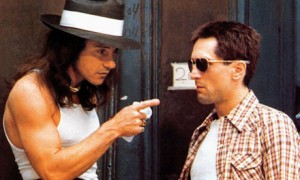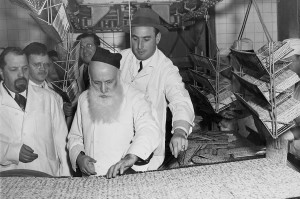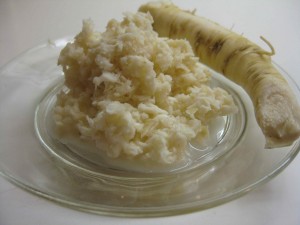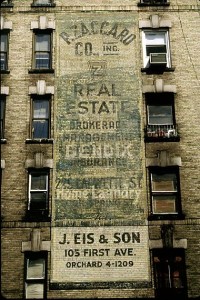Passover is upon us and HG is filled with memories of the traditional food and drink from the Seders of HG’s youth. The Seder is the traditional meal at the beginning of Passover when the family reads from the Hagadah, a celebration of the escape by the Jews from Egyptian slavery. (HG, in previous posts, has recalled raucous and irreverent Seders of the past). The food most identified with Passover is the matzo, the unleavened bread that sustained the Jews during their hasty exodus. HG’s late Mom always insisted on Streit’s, a matzo baked for decades in antique ovens on Rivington Street in the Lower East Side. Founded in 1915, Streit’s closed its Rivington Street factory in 2015 and moved to New Jersey, ending a 90 year Manhattan history. Wasn’t gentrification. For years, the family turned down numerous offers to sell their property to real estate developers. The old ovens didn’t work anymore and no one knew how to repair them. Mom always insisted on Horowitz-Margareten egg matzos (HG’s favorite). Horowitz-Maragreten disappeared from New York and (along with Goodman’s, another New York matzo company) was bought by the giant Manischewitz company. Manischewitz’s is owned by Bain, the Boston investment firm once headed by Mitt Romney (Oy Vey!!). Schapiro Wine Company was another Rivington Street landmark. Founded by Sam Schapiro in 1899, the company closed its Lower East Side winery in 2000. Had a brief run as a winery in Monticello, N.Y. Schapiro wine was very sweet (loved by HG’s Mom and despised by HG’s Father). Its motto: “Wine So Thick You Can Almost Cut It With A Knife.” The cool, cool Lower East Side is now filled with expensive condos, art galleries, trendy bars and restaurants, cutting edge fashion shops. The only remnants of traditional Jewish eating are Katz’s Delicatessen, Russ & Daughters Appetizing Shop and Cafe, Yonah Shimmel’s knishes and Economy Candy. A bit of happy news. Kossar’s Bagel and Bialy Bakery has re-opened (after closing for a few months) in totally refurbished premises at 367 Grand Street. Traditional products like bialys and pretzels (onion rolls) are still great but there are some aberrations. Apple/cinnamon bialys, alas.
“Cool” replaces Kosher on the Lower East Side
April 25th, 2016 § 0 comments § permalink
“Where The Finest Jews Eat”
March 1st, 2015 § 2 comments § permalink
For many years that was the motto of Moskowitz & Lupowitz, a Romanian-Jewish restaurant on Second Avenue and Second Street in New York. It was a favorite of Groucho Marx, Milton Berle, Eddie Cantor, Sid Caesar and other theatrical luminaries. It was founded in 1909 by Romanian immigrants and for many years was owned and managed by Louis Anzelowitz until finally closing in 1966. It was one of HG’s favorite New York restaurants, offering a robust array of artery clogging traditional Eastern European Jewish dishes. (The loud Sammy’s Romanian on Chrystie Street is the last of the Romanian Jewish restaurants on the Lower East Side. Its menu is a pale shadow of the wonders once offered by M & L). When HG was a child M & L loomed large in HG’s imagination as he often heard their catchy jingle being sung by the Pincus Sisters on the Yiddish language radio station WEVD (named after socialist Eugene Victor Debs). M & L was the classiest Lower East Side restaurant with waiters in tuxedos and thickly carpeted floors. Despite the elegant atmosphere, it was never very expensive. In 1940 you could have a five course steak dinner for $1.35 (fruit juice, appetizer, soup, main dish, dessert). In 1962 you could have this meal for about $4.50. HG’s cardiologist would not have approved of HG’s typical M & L meal: Brains, sweetbreads, chicken livers or chopped liver with chicken fat and onions as an appetizer. This was followed by chicken soup with “kreplach” (meat filled dumplings). Main course was an M & L specialty: “Mushk” steak (rib steak) with “kasha varnishkes” (buckwheat groats with Farfalle pasta, fried onions and chicken fat.) Dessert was an afterthought: Stewed prunes (for digestive purposes). HG drank vodka with the appetizers, beer with the main course and Slivovitz (plum brandy) as a digestif. Plus Russian tea (strong black tea with a spoonful of cherry jam). HG often went to M & L with a stylish girl friend who ordered four appetizers as a meal (they had to be brought in succession by the waiter who grumbled as he made trips to the kitchen). The lady washed them down with Wild Turkey bourbon on the rocks. Pre-World War Two Lower East Side had many “Romanian broilings” restaurants. When little HG accompanied his father to that neighborhood to buy HG a winter outfit (heavy plaid mackinaw, corduroy knickers, cap with attached earmuffs) the two often would visit these joints to lunch on broiled “karnezelach” (beef, garlic and onion cigar-shaped hamburgers) with crisp “silver dollar” potatoes. At night, these places would transform and often featured a violinist playing Yiddish and Gypsy melodies. Italian mobsters and their Jewish gangland associates loved these rough and ready eateries. They were known as “Jew joints.” The bad guys never patronized Moskowitz & Lupowitx. Too classy. Too bourgeois. A “carpet” joint.
Stick-To-The-Ribs Eating
March 22nd, 2014 § 0 comments § permalink
Yes, that was the descriptive phrase for heavy, high-cal, stratospheric cholesterol, cheap food devoured by HG in New York during his college days. A real belly buster was mofongo, found in Puerto Rican restaurants in East Harlem, South Bronx and Broadway in the 140’s. Mofongo consisted of mashed, fried plantains (green bananas) formed into a big dumpling shape and served in a bowl of broth with garlic, olive oil and cuchifritos (pork cracklings). HG also ate big bowls of thick skinned potato pierogi with sour cream in Polish restaurants on lower First Avenue and giant plates of ground pork stuffed cabbage at Ukrainian restaurants in the same neighborhood. In African-American Harlem, HG feasted on fried catfish and ribs with mac-and-cheese, gravy doused rice and greens enriched by ham hocks. In the Mott Haven neighborhood of The Bronx, Mom-and-Pop Italian restaurants served bowls of spaghetti with oil and garlic of a size designed to appease the appetite of guys who worked all days with their hands and strong backs. Prices for these aforementioned treats ranged from 75 cents to $1.75.
At Last: A Jewish Delicacy Breakthrough
April 5th, 2013 § 7 comments § permalink
Many, many decades ago when HG was a young New York journalist, HG would join a raffish crowd of late night drinkers at Moe Dubiner’s bar/restaurant on Stanton Street (years before the Lower East Side became cool and trendy). The cuisine was Eastern European Jewish, relished alike by the Irish policemen and the Jewish mob guys and bail bondsmen who made the joint their hangout. HG’s nocturnal snack at Dubiner’s was a big plate of gefilte fish (for the unknowing–this is a type of robust quenelle of minced whitefish and carp poached in fish broth) accompanied by challah, rye bread, pickles and copious amounts of very strong horseradish. Four Roses rye whiskey and beer chasers. These tastes of yesteryear have, thankfully, been rediscovered. Kedem Gourmet Gefilte Fish from Israel (available at Whole Foods) is the real thing. As the label says: “No MSG. No egg yolk. No matzo meal.” The Kedem product has the right density and no sweetness. Its appropriate companion is Lou’s Famous Organic Horseradish. Most bottled horseradish is insipid and tasteless. Not Lou’s. This is powerful stuff with a real bite that must be used with a degree of caution. Clears the sinuses and makes HG feel young again.
Lower East Side Memory
May 16th, 2012 § 0 comments § permalink
Gone from the streets of the ever more trendy Lower East Side of Manhattan are the choppers. Permit HG to explain. HG does nor refer to people with cleavers. The “ch” in HG’s “choppers” is pronounced with a guttural, Yiddish “ch” as in “challah.” In Yiddish the word chop means “grab.” And, that’s what a chopper did. He grabbed you. When little HG accompanied his father on various Lower East Side errands, choppers were stationed outside of men’s clothing stores on East Broadway and Division Streets. They would grab the arm of HG’s father and try to drag him into a store. Meanwhile they offered a sales pitch in heavily accented English: “Come inside. Bargains. The finest materials. Beautiful suits, coats. Latest styles. Take a look. Prices you won’t believe. No harm in looking.” The chopper had a grip like an iron vise. It took real strength (possessed by HG’s father) to extricate oneself from a dedicated chopper.
All of this took place many, many decades ago in a simpler New York. Now geniuses like Wylie Dufresne turn out imaginative food in chic Lower East Side restaurants. Nary a knish or “chopper’ in sight.
SJ here. Allow me to make a brief interjection. True, the Lower East Side has transformed into a hipster playground of trendy bars, cafes, etc. But, like a ghost sign that bleeds through faded paint jobs, elements of the old Lower East Side are still with us. Orchard Street, while gussied up beyond recognition, still houses of number of old clothing stores and, surprise, surprise, an honest to god chopper. Yes, I was recently stopped in my tracks — the grip was that strong — by a middle aged Hasid who said, “Young man, you look like a fellow who could use a nice suit. We have suits, so good, so cheap, come inside…” A relic of the old days, the chopper still has the stuff…And when it comes to knishes!!! We have the best still in operation!!! Yes Yonah Schimmel Knishes is open right on Houston Street and serving up a delicious Knish — get the Kasha!!!
Vodka Enhanced
April 28th, 2012 § 0 comments § permalink
After HG’s late afternoon exercise ritual of varied stretches and 45 minutes of swimming in the lap pool, HG tries to mitigate the health benefits he has accrued by diving into a large glass of vodka on the rocks. HG is not a believer in the high priced vodkas. Just hype and advertising. However, HG does enhance his proletarian vodka. Sometimes HG adds a dash of Angostura Bitters or Peychaud Bitters or Fee Brothers West Indian Orange Bitters. (A dash of Peychaud also enhances a mediocre brandy). When HG wants a taller beverage, HG mixes vodka with a bit of Campari, Aperol or St. Germain. (HG does not fancy vodka and tonic). Curiously, vodka was never present in the Belorussian/Jewish immigrant home of HG’s youth. Like many Jewish immigrants of the early 1900’s, HG’s Dad fancied rye whiskey, namely Park & Tilford (pronounced “Pok un Tilfeh”), the favorite tipple in Lower East Side bars. When HG was a journalist in the early 1950’s, HG continued the Park & Tilford tradition at the Mirror Bar on New York’s E. 45th Street. Three shots of P & T for one buck. The house bought the fourth. A nice cocktail interlude.
Better (And Healthier) Than Pastrami.
July 18th, 2011 § 1 comment § permalink
Being a born and bred New York guy, HG has always loved a good pastrami sandwich. It is the ultimate urban sandwich — designed for, created and yes, perfected by the Jewish immigrant groups who nestled in tight enclaves like New York’s Lower East Side; all of whom needed a portable meal as they hustled to fulfill their American dream. And, yes, such a treat is still available (with many a regional discrepancy!) from Montreal to New York (most notably at Katz’s) and even across the country in LA (Langer’s). However, HG has discovered his new favorite sandwich at a more pastoral location: Lin’s Takeout in Prince Edward Island. Little more than a trailer, Lin’s is nestled on a bucolic hillside on the road to Greenwich Provincial Park (beautiful beaches, warm water swimming). HG lunches on Lin’s scallop burger. Lin tucks about 15 sweet, gently sauteed sea scallops into a big, soft bun. A slice of tomato. A lettuce leaf. Cole slaw. Touch of mayo. Sometimes greedy HG accompanies this sea treat with crisp, greaseless French fried onion rings.
No smell of asphalt. No car horns blazing. No taxi drivers cursing your mother with a Turkish accent. Just the sun gently shimmering off the waters of St. Peter’s Bay. The joys of a pastoral sandwich…Ahh Life’s good.





